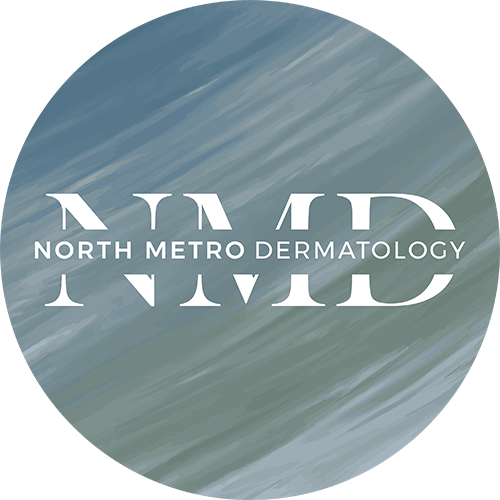Most people experience dry skin at some point in their lives, but those with persistent dry skin can be predisposed to developing eczema. Dry skin can occur due to a variety of factors including cold, dry weather, genetics, and harsh cleansers or soaps.
While the word “eczema” most often refers to “atopic dermatitis,” the term “eczema” is widely used to refer to various types of dermatitis, including irritant and allergic contact dermatitis which often coexist with atopic dermatitis.
One common theme with all of these conditions is that rubbing and scratching, due to itch, disrupts the skin barrier resulting in persistence and worsening of the dermatitis.
ATOPIC DERMATITIS, most often referred to “eczema,” is a chronic inflammatory condition in which the skin barrier has difficulty repairing itself. Eczema can develop in children and adults and affects all races. Many factors contribute to atopic dermatitis – these include a disrupted skin barrier, genetic predisposition, and environmental triggers (such as pets, smoking). Eczema can also be associated with other medical conditions, such as asthma and allergic rhinitis (seasonal allergies).
ALLERGIC CONTACT DERMATITIS is a form of dermatitis that occurs after skin contact with a specific substance to which you may be allergic. This allergy can result from preservatives, metals, or other chemicals in products we use every day. The development of the allergy can occur over time and with repeated exposure. When the cause of an allergic reaction is unclear, patch testing is an in-office test which can potentially identify the causative allergen.
IRRITANT CONTACT DERMATITIS is a form of dermatitis resulting from chemical damage or from activities that impair the skin’s barrier. Irritating agents found in soaps, cleansers and solvents can destroy skin cells – leading to inflammation, redness and scaling. Other potential irritants include dry air, changes in temperature, water, and frequent hand washing. No diagnostic test exists for this type of eczema. A dermatologist will assess your skin, and your history of exposures to help you identify and best manage this type of dermatitis.
While there is no cure for “eczema,” there are many treatments that can be used to minimize the frequency and severity of flares.
SKIN CARE RECOMMENDATIONS: For those with dry skin or milder forms of eczema, skin care precautions may be able to help control flares. Minimizing hot showers and exposure to irritants or triggers (such as scented perfumes, harsh soaps, scented detergents, etc.) can reduce flares. Consistent daily moisturizing can also improve the skin barrier and reduce flares. Visit our store to learn more about products that may help your dry skin.
TOPICALS: First-line prescription treatment is usually topical corticosteroids. These treatments can be prescribed in various forms – including creams, lotions, and ointments – and range in strength and efficacy. Sometimes, your provider may recommend a topical non-steroid agent. These medications can be used for a longer period of time without the side effects associated with the long-term use of topical steroids.
PHOTOTHERAPY & SYSTEMIC TREATMENTS: Different treatments are advised for widespread or persistent eczema. Often, narrowband UVB light treatment (phototherapy) may be recommended for moderate-severe atopic dermatitis. Patients come to the office 2-3 days per week for quick “light box” treatments to help treat their eczema.
For those who fail topical therapies and phototherapy, Dupixent® is an FDA-approved injectable biologic medication indicated for the treatment of moderate to severe atopic dermatitis.
Oral immunosuppressive treatments are also used to treat severe dermatitis and require close monitoring as well as follow-up visits with your provider.
